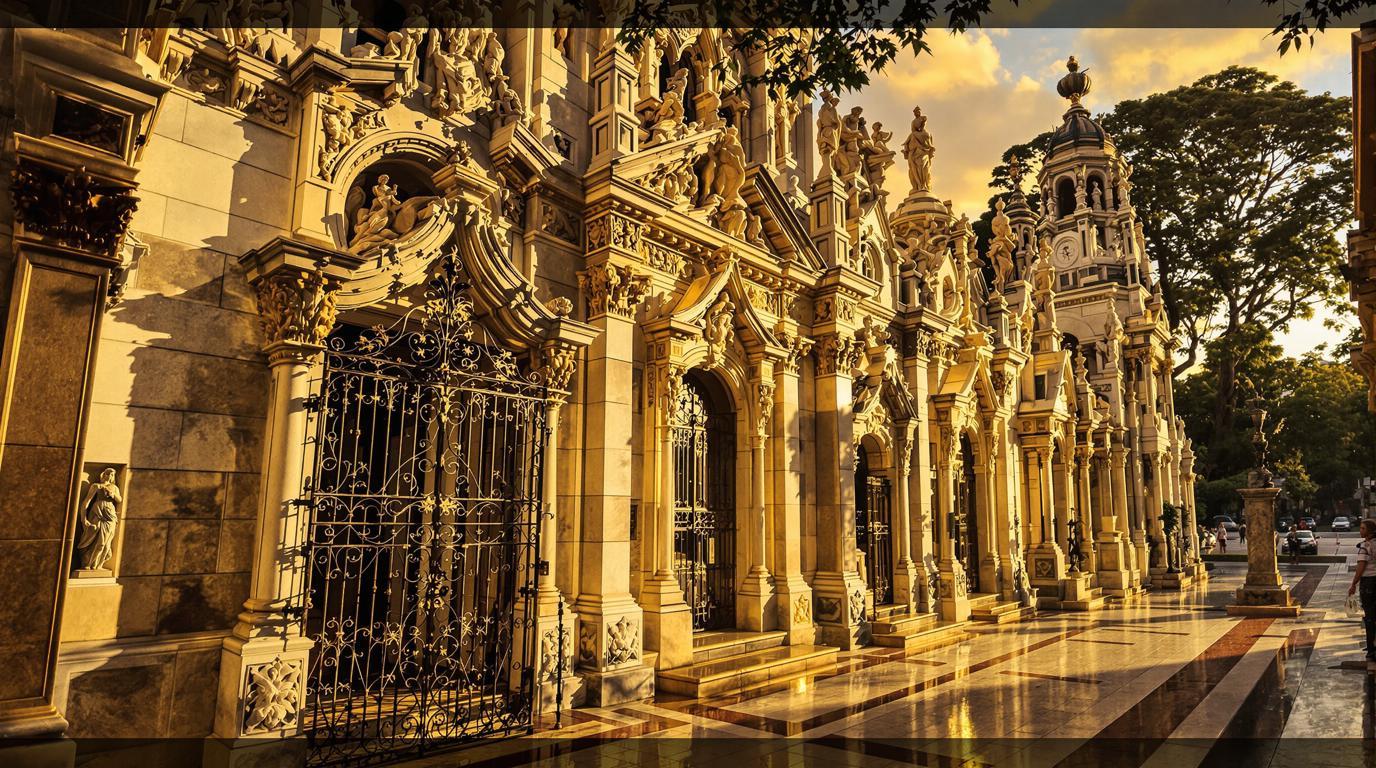Buenos Aires, Argentina’s passionate capital at 34.6037° S, 58.3816° W, captivates visitors with its irresistible blend of European grandeur and Latin American spirit. Dubbed the “Paris of South America,” this city of 3 million porteños offers far more than just tango and steak—it’s a cultural powerhouse where old-world charm meets vibrant street life in a metropolis that never quite sleeps but instead simmers with creative energy.
The city where architecture tells stories
Walking through Buenos Aires feels like traversing multiple European cities at once. The city showcases a remarkable architectural tapestry spanning French Belle Époque mansions in Recoleta to Italian-influenced buildings in San Telmo. Teatro Colón, the world-renowned opera house, stands as a monument to acoustic perfection that even Pavarotti declared among the world’s finest.
“Our buildings aren’t just structures—they’re our history books, telling stories of immigration, prosperity, and cultural ambition,” explains María Gonzalez, local architectural historian.
San Telmo: Where time seems to stand still
The cobblestone streets of San Telmo, Buenos Aires’ oldest neighborhood, transport visitors to another era. Sunday’s antique market transforms Plaza Dorrego into a treasure hunter’s paradise where pocket watches, vintage cameras, and silver mate gourds compete for attention. As afternoon fades, spontaneous tango performances erupt between market stalls, drawing circles of mesmerized onlookers.
La Boca’s technicolor dreamscape
Few places capture Instagram attention like La Boca’s Caminito, where corrugated metal houses painted in primary colors create a photographer’s playground. This working-class neighborhood, birthplace of tango and the beloved Boca Juniors football club, offers Buenos Aires at its most vibrant. The area transformed when local artist Benito Quinquela Martín decided to paint the dilapidated port neighborhood in the same colors as the boats that sailed into harbor.
Recoleta Cemetery: A city of the dead
Perhaps nowhere reflects Argentine society’s complexity better than Recoleta Cemetery. This extraordinary necropolis houses 6,400 ornate mausoleums, including Eva Perón’s relatively modest resting place. Like Greece’s vehicle-free islands with ancient pathways, Recoleta’s narrow marble avenues create a labyrinth of remembrance, where architectural styles from Art Nouveau to Neo-Gothic compete for attention.
The unexpected green oasis
Palermo’s parks provide welcome respite from urban intensity. The Japanese Garden offers tranquility reminiscent of Kyoto’s preserved temples and gardens, while the Rose Garden’s 18,000 roses perfume the air during spring. Early mornings reveal locals practicing tai chi or sharing mate tea beneath jacaranda trees that paint the city purple each November.
Secret rooftops and hidden terraces
Beyond the typical tourist circuit lies a network of spectacular rooftops and hidden bars. The Palacio Barolo, inspired by Dante’s Divine Comedy, offers sunset views that rival the panoramic vistas of the Pyrenees’ highest lakes. Meanwhile, the unmarked doorways of Florería Atlántico conceal one of Latin America’s best cocktail bars beneath an innocent-looking flower shop.
“The best of Buenos Aires exists just beyond where tourists typically look,” notes Carlos Mendez, longtime doorman at a speakeasy in Palermo. “We cultivate our secrets like gardens.”
Where bookstores become cathedrals
El Ateneo Grand Splendid transforms a 1919 theater into possibly the world’s most beautiful bookstore. Reading takes center stage where performances once occurred, with former theater boxes serving as intimate reading nooks. This literary temple rivals UNESCO masterpieces with their hidden architectural treasures.
A culinary revolution beyond beef
While Argentina’s legendary steaks deserve their reputation, Buenos Aires has quietly undergone a culinary renaissance. Closed-door restaurants (puertas cerradas) operate from chefs’ homes, offering innovative menus that merge Italian heritage with indigenous ingredients. The wine scene extends beyond Malbec, with boutique vineyards showcasing Torrontés and Bonarda varieties that perfectly complement the evolving cuisine.
The city of 100 milongas
Tango isn’t just for tourists—it’s the beating heart of porteño identity. Across Buenos Aires, over 100 milongas (tango dance halls) operate weekly. La Viruta fills with dancers from age 18 to 80 after midnight, creating a multi-generational communion through embrace and movement. The city’s tango culture, like Riga’s 700 Art Nouveau buildings, represents a living cultural treasure more concentrated than anywhere else on earth.
Buenos Aires doesn’t reveal itself immediately. It rewards the patient traveler who lingers in cafés, accepts late dinner invitations, and follows the music down unmarked streets. This is a city that operates on passion rather than efficiency—a place where beauty and chaos dance together in perfect, imperfect harmony.
